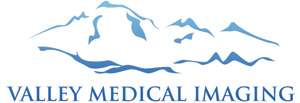Q. Do I need to book an appointment?
A. Mammography exams do require an appointment. Please contact our Langley office for Mammography appointments. Please give us 24 hours notice to cancel your appointment. Fees are charged for 'no-shows'.
Q. Do I need a requisition for all types of exams?
A. Yes, you will need a requisition from your doctor or nurse practitioner for all examinations.
Q. How do I prepare for a mammogram?
A. Very little preparation is required. You may eat, drink, and take regular medications. If you are premenopausal it is preferable to have your mammogram the week following your period when your breasts will be the least tender. You will be asked to undress from the waist up, so it is advisable to wear a skirt or slacks rather than a dress the day of your exam. Do not wear underarm deodorant, powders, ointments, or creams on your breasts on the day of the exam. These can show up on the mammogram images.
Q. Should I have a mammogram if I am pregnant or think I may be pregnant?
A. You should not have a mammogram during the first trimester of your pregnancy. If your doctor approves a mammogram during your pregnancy this will be indicated on your requisition and lead shielding can be applied to your abdominal region.
Q. Can I bring my child with me to my appointment?
A. We request that you do not bring children with you to your exam. To prevent exposure to radiation they cannot enter the mammography exam room with you. Because our staff need to focus on other patients they are not able to supervise children in the waiting room. Please arrange to leave the children at home or to bring another adult to watch them in the waiting room.
Q. Can I bring family members with me?
A. For safety reasons we do not allow you to bring anyone into the room during your exam.
Q. What can I expect during my mammogram?
A. Exams are performed by registered technologists who have had specialized training in diagnostic mammography. Your technologist will take a brief history from you and have you change into a gown. If this is your first exam the procedure will be explained to you. Please feel free to ask any questions during your exam. A routine mammogram consists of four pictures, two of each breast. The radiographer firmly, but gently, pulls as much breast tissue as possible onto the x-ray detector. She will then apply compression to firmly press your breast against the detector. You may find the compression uncomfortable for a few seconds. The technologist will only apply as much compression as you can tolerate, but adequate compression is essential to view your breast tissues. The testing takes approximately 15 to 30 minutes. After the technologist has completed the exam, you will be asked to wait while the images are checked. On some occasions additional views may be necessary.
Q. How long will my exam take?
A. The average time for a mammography exam is 15-30 minutes. This can vary depending on the complexity of the exam so please allow for delays. We ask that you arrive 15 minutes early for your appointment to park and check-in.
Q. Can I see my images?
A. No, the images are sent to our computers. The results are reviewed by the radiologist and a report is sent to your doctor.
Q. Will the technologist tell me what they saw in my exam?
A. No, even though the technologists are registered and specially trained to perform your exam, only Radiologists are qualified to interpret your results. The Radiologist will interpret your images and a report will be sent to your doctor, typically by the end of the business day. If immediate attention is required your doctor will be contacted by our office as soon as possible.
Q. What will happen following my mammogram?
A. Your mammogram images will be reviewed by the radiologist after the exam has been completed. In some instances, the radiologist will discuss your exam with you. Your doctor will be sent a detailed final report by fax.
Q. When will my doctor get the report?
A. Medical reports are usually faxed to your doctor by the end of the business day. Urgent results will be phoned or faxed to your doctor as soon as possible. Your doctor also has the option to view your results online.
Q. What is mammography?
A. Mammography is an x-ray exam that produces images of the internal structures of the breasts. These images can detect lumps that are too small to be felt by you or your doctor, as well as abnormal calcifications. Full-field digital mammography makes it possible to obtain superior images with a very small radiation exposure.
Q. What is the difference between diagnostic and screening mammography?
A. Screening mammogram does not require doctor's referral and is done by the Screening Mammography Program of BC. It is a routine scan recommended for all women over the age of 40. Diagnostic mammogram does require a doctor's referral and is done in our Langley clinic. It is to check for more details in patients who have a lump, unusual nipple discharge, pain, or for who have had previous breast cancer or have breast implants.
Q. Do I need to use a thyroid guard when I have a mammogram?
A. Thyroid guards are not recommended as they can interfere with capturing a clear breast image and can limit the radiographer's ability to ensure all of the breast tissue is included in the image. The radiation beam focuses on the breast tissue area so the amount of exposure to the thyroid is minimal, even less than the small amount that the breast tissue receives.
Q. Can I breast feed after my mammography?
A. A mammogram does not affect breast milk so mothers can continue to nurse.
